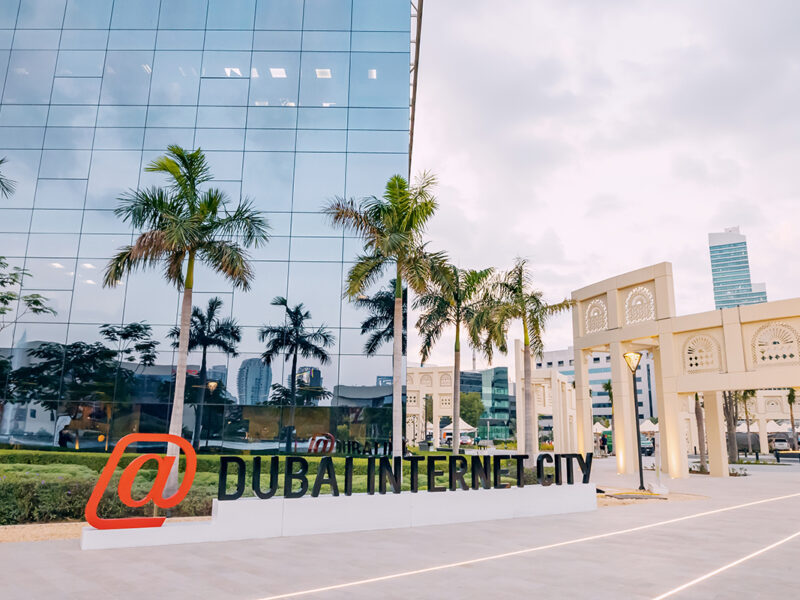Enterprises in the Middle East have been investing heavily in storage systems to handle ever increasing amounts of data. Investments in fibre-channel storage area networking (SAN) products and software have been particularly on the rise, keeping pace with the boom in greenfield datacentre construction and consequent spike in IT infrastructure spending in the region.
“If you look at market statistics there is still a significant amount of direct attached storage that our customers are buying. Yet, there is a very strong adoption rate for SAN – the solutions and the philosophy – which are becoming more mainstream,” says Martyn Molnar, NetApp’s regional area director.
While much of the developed market is beginning to look at SAN management in integration with storage resource management (SRM), regional enterprises still consider SAN as singular structures and manage them in that manner. This behaviour begins with the way that most enterprises buy their storage solutions.
Bringing the pieces together
“In the Middle East and Asian markets, we do notice that many customers do not buy SAN for consolidation but with a specific application focus. They buy storage for Exchange or virtualisation or for a database. We call these project specific SANs,” says Eric Endebrock, manager for enterprise storage marketing at Dell.
Buying SAN in silos is like living in a house with a water tank for every room.
“There is little in the form of comprehensive SAN management or SRM to be found in many countries of the Middle East. What we often see are point products that monitor and manage one or more storage arrays from a particular vendor, another that would do the same for HPAs (host protected areas) and maybe one more for monitoring just the switches. That’s like living in a house with a water tank for every room instead of one for the whole house,” says Omar Dajani, systems engineering manager for Symantec MENA.
Two distinct habits usually accompany this mindset to buy and operate SAN environments as single silos. First, most enterprises stick with the management software that comes with the SAN products and second, they tend not to rock the boat with SAN after the initial implementation.
“Most enterprise users look at SAN solutions as vertical investments and use only the default and free vendor software that comes along in the solutions package. Their strategy is not truly multi-vendor as some other parts of the globe. Often they find the free solution sufficient to manage their storage and do not feel compelled to put in extra funds to get an advanced tool,” says Cherif Sleiman, chief technologist at Cisco MEA.
Endebrock agrees saying, “Customers are really not focused on the RoI that they can get from owning the higher end software. They state that they do not manage storage at the granularity that these solutions offer. They do not see a financial benefit from spending extra funds to purchase software to manage something that they do not have any problems with in the first place.”
The second habit is that of user reluctance to change.
“Often enterprises never change the settings or the parameters of the storage infrastructure once the configuration is done. Most administrators and enterprises are reluctant to make any changes to a functioning environment,” says Mohamed El-Shanawany, regional storage sales manager for IBM.
These prevailing attitudes towards storage have left most large enterprises in the region with a very limited view across their SAN infrastructures even as they continue to add silos.
“There is no visibility across these SAN environments and that’s a major problem. Storage capacity might appear to be running out when actually there is enough. According to some market statistics, utilisation is only around 35%-45% in a typical network and this is just disk capacity. This encourages more capital expense which is being made prematurely and unnecessarily,” says Dajani.
He also points out that the lack of proper monitoring and management of the infrastructure results in several duplicate copies of the same piece of data, which can consume a lot of space as well.
The unsolvable problems
As SANs multiply, a small percentage of regional end users (almost always large firms) are beginning to look at advanced software usage and SRM to manage storage networks with more efficiency.
“Today, SAN management software must be highly scalable, and enable centralised management across multiple heterogeneous fabrics spread across the distributed enterprise. Increasing complexity is driving the need for more integrated management tools which will allow the company to use fewer tools to manage the storage infrastructure,” says Khalid Khalil, regional manager for Greece, Turkey and MEA at Brocade.
However, these end users often choose advanced SRM solutions as well from the original providers of their SAN solutions, in spite of the availability of equally good third party solutions. This effectively locks them to a single vendor. On a larger scale, some vendors claim that these solutions are not always the panacea that they might seem to be.
“There are advanced tools, such as Symantec’s, that are capable of discovering, monitoring and managing storage across an enterprise. But the software can see only what hardware vendors allow it to see. Note that these are businesses and if these vendors allow other software to monitor their solutions, many end users might not be interested in purchasing the vendor’s own advanced software. That’s where the work of standards bodies such as SNIA (Storage Networking Industry Association) and SMI (Storage Management Initiative) can be significant,” says Dajani.
SNIA and SMI are standards bodies that bring together some of the biggest vendors in an effort to simplify management by giving increased visibility to end users. The initial version of the SMI’s specification (SMI-S) was brought out in 2004. The specification takes a step towards ensuring that end users can work across a heterogenous storage environment through a single interface. The SMI-S is aimed at helping end users integrate and manage multi-vendor components in a SAN without much fuss.
“There is no single product that meets every need and every situation. Storage management standards such as SMI-S become building blocks for solution suppliers to embed into their offerings to make more robust, easier to use solutions. However, a standard is not a solution, it is just an interface designed to improve the solution’s total cost of ownership and reduce the complexities of interoperability,” says Said Akar, pre-sales manager for EMC MENA.
Many vendors state that the specification covers only a small percentage of storage management and has been rather slow in including all the storage elements that an end user might need, especially provisioning and virtualisation. According to Wayne Adams, chairman emeritus for SNIA, the next version of the specialisation – which is scheduled for release in the last quarter of 2007 – will include enhanced storage virtualisation and support integration with system virtualisation among other features which should set user and vendor minds at rest.
Most of the bigger vendors claim adherence to the SMI-S standard. Nevertheless, awareness among end users of the standard and what it can do in a storage environment remains very low in the region.
“You see it often on tenders. But whether enterprises rule out a vendor because he is not SNIA or SMI-S compliant is a rather difficult question to answer. It has become a baseline standard in the industry and customers should ask some serious questions of any vendor who is not compliant,” says Stewart Buchanan, research director for the procurement and IT asset management group at Gartner.
Leapfrogging technologies
Apart from a few service providers, telcos and financial sector enterprises, few in the region take storage seriously enough to invest in comprehensive management solutions. Most industry watchers predict that this large majority of enterprises are heading towards tough times with the lack of integration of SAN, very little interest in SRM and their disinterested attitude towards storage standards.
Surprisingly, all concede that Middle East enterprises remain only a few steps behind their Western counterparts. In fact, a vast majority predict that things are set to change within the next 12 months as enterprises warm up to IT resource optimisation.
“There has not been a lot of uptake on pure SRM tools globally according to market statistics. There are several organisations which are beginning to consider storage as an integral part of their wider environment. IT management is broadening its scope and bringing storage components into the operations space. There is also a growing outlook towards IT as a service within organisations. It is a global trend which is yet to cascade to all regions,” says Gartner’s Buchanan.
He adds that companies should stop thinking about capacity, utilisation and technology selection and move onto considering structural and operational factors first before choosing the exact solution.
“Utilisation is like a road network. It’s not about how many cars you can put on it, but at what speed you can drive those cars. Companies have to consider data access as much as data storage. In a new report, that is scheduled for publication shortly, Gartner is trying to break new ground and change the mindset of people who are looking at storage asset choices. This looks at data storage not in terms of tiers as is fashionable today but in terms of functionality and usage cases – as working storage, archive storage and recovery storage,” says Buchanan.
“Why customers are managing storage is even more important than the question of what and how. Globally, IT operations and service managers are taking more interest in storage, perhaps in response to competition from external service providers. It is not a great shifting of the way you do business but just a different perspective to how it’s done,” he adds.
Many in the industry predict that if regional enterprises are able to catch the next wave of storage technology they might just miss getting mired in a SAN management nightmare.
Enterprises have to start now, assess their needs and plan investments as a part of the overall IT architecture to ensure efficiency and avoid future trouble with data storage.
NME presents some of the key points to keep in mind when purchasing and managing SAN solutions:
1. Make purchasing decisions based on enterprise infrastructure and distribution. Avoid buying project specific SANs as far as possible.
2. Look at multiple vendors and check for compliance with standards.
3. Remember, while you should avoid vendor lock-in, purchasing SAN solutions from the same vendor can provide you a more homogeneous set-up.
4. Industry experts suggest that when you move beyond 64 fibre-channel ports or start adding replication, a geographically dispersed network or disaster recover sites, it might be time to look for advanced software.
5. Having made the decision to go for advanced software or SRM tools, don’t just choose the option that your preferred vendor might have to offer. Look around for third party solutions which might be just as good, if not better, than your vendor’s solutions.
6. When investing in advanced solutions, ask your vendor to detail what the software can do – especially across a heterogeneous SAN environment. Insist on a detailed list of what they can do across different vendors’ hardware.
7. Avoid going for too many features at one go. While some of these might appear to be excellent propositions, they could add to your woes rather than proving advantageous when you run them in your infrastructure.
8. Run pilots and test the software before buying. Though that might appear obvious, many enterprises fail to do this basic step and buy preferred vendor solutions rather blindly.








